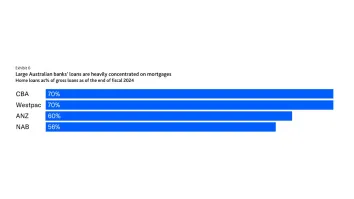SaaS proves beneficial to banks’ financial efficiency and security
Banks streamline IT costs and improve security with SaaS solutions.
As banks continue to seek ways to optimise their IT management, the adoption of Software-as-a-Service (SaaS) solutions is proving increasingly advantageous. Danny Lam, Director for Industry Practice Lead at Moody’s, highlighted financial efficiency, enhanced security, and adaptability to market changes as some of the key benefits.
“SaaS model usually functions on a subscription basis, which offers the advantage of lowering initial capital outlays and transforming IT expenses into a manageable operation cost,” Lam explained.
This financial structure is particularly beneficial for banks aiming to streamline their cost management strategies. By shifting to a SaaS model, banks can achieve more precise budget control, allowing them to allocate resources more effectively. Lam emphasised that this strategic approach not only optimises financial planning but also supports long-term growth and competitiveness in the banking sector.
Beyond financial advantages, SaaS solutions are also crucial for mitigating the risks associated with data breaches and regulatory non-compliance. Lam noted that “the landscape of cybersecurity threat is becoming more complex and frequent,” which poses significant challenges for banks in safeguarding sensitive information and adhering to evolving regulatory standards.
He said that SaaS providers are addressing these challenges by allocating substantial resources toward enhancing their security protocols and aligning with compliance frameworks. This investment in advanced security measures allows banks to achieve a level of protection that might otherwise be costly and difficult to implement internally.
By leveraging the robust security infrastructure provided by SaaS vendors, banks can reduce the strain on their IT departments and minimise the likelihood of encountering issues related to data breaches or regulatory failures.
Lam pointed out that “SaaS offerings present a significant advantage over traditional on-premise software,” particularly in rapid deployment capabilities. This allows banks to quickly respond to fluctuating market dynamics and evolving customer demands. Unlike traditional software, which may require extensive installations and setup times, SaaS solutions can be implemented much more swiftly.
Furthermore, he said that SaaS providers handle software updates and integration of new features, ensuring banks always have access to the latest technology without the need for manual updates or costly development projects.



















 Advertise
Advertise









Commentary
Why APAC banks must rethink their approach to the cost reduction challenge
Thailand backs major conglomerates for digital banks but risks stifling innovation